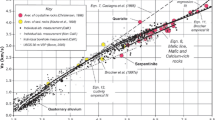Abstract
Frequency-wavenumber (f-k) spectra of seismic strong-motion array data are useful in estimating back-azimuth and apparent propagation velocity of seismic waves arriving at the array. Such estimates are required to model wave passage effects while studying spatial variability of strong ground motion. Although periodogram-based spectral estimates are commonly used, practical applications based on them encounter limitations, such as, lack of objective criteria for selecting a proper smoothing window and its associated bandwidth, and relatively large variance of the estimated spectral quantities. We present an alternative spectral estimate based on parametric time series modelling approach. The well-known autoregressive (AR) time series model is used in a system-based approach to estimate the spectral matrix of auto- and cross-spectral densities. Such spectral estimates are found to be smoother than the windowed periodogram estimates, and can directly be used in f-k spectral analysis. We present an example application of the proposed technique using strong-motion data recorded by the SMART-1 array in Taiwan during the January 29 1981 \(M_{L}\) 6.3 earthquake. Our results, in terms of back azimuth and apparent propagation velocity, are found to be in excellent agreement with those reported in the literature.




Similar content being viewed by others
References
Akaike H (1970) Statistical predictor identification. Ann Inst Stat Math 22:203–217
Akaike H (1974) A new look at the statistical model identification. IEEE Trans Autom Control AC 19:716–722
Bokelmann GHR, Baisch S (1999) Nature of narrow band signals at 2.083 Hz. Bull Seismol Soc Am 89: 156–164
Box G, Jenkins GM, Reinsel GC (1994) Time series analysis: forecasting and control, 3rd edn. Prentice-Hall, Prentice
Goldstein P, Archuleta RJ (1991) Deterministic frequency wavenumber methods and direct measurements of rupture propagation during earthquakes using a dense array: data analysis. J Geophys Res 96:6187–6198
Hao H, Oliveira CS, Penzien J (1989) Multiple station ground motion processing and simulation based on SMART1 array data. Nucl Eng Des 111:293–310
Hindy A, Novak M (1980) Pipeline response to random ground motion. J Eng Mech Div ASCE 106(2):339–360
Lenonard M, Kennett BLN (1999) Multi-Component autoregressive techniques for the analysis of seismograms. Phys Earth Planet Inter 113:247–263
Loh CH, Penzien J, Tsai YB (1982) Engineering analysis of SMART1 array accelerograms. Earthq Eng Struct Dyn 10:575–591
Newmark NM, Rosenblueth E (1971) Fundamentals of earthquake engineering. Prentice Hall Inc., Englewood Cliffs
Oliveira CS, Hao H, Penzien J (1991) Ground motion modeling for multiple input structural analysis. Struct Saf 10:79–93
Rupakhety R, Sigbjörnsson R (2012) Spatial variability of strong ground motion: novel system-based technique applying parametric time series modelling. Bull Earthq Eng 10:1193–1204
Spudich P, Oppenheimer D (1986) Dense seismograph array observations of earthquake rupture dynamics. Earthq Sour Mech Geophys Monogr 37 (S. Das, J.)
Zerva A (1986) Stochastic differential ground motion and structural response. Ph.D. Thesis, Department of Civil Engineering, University of Illinois at Urbana Champaign, Urbana
Zerva A (2009) Spatial variation of seismic ground motions. CRC Press, Taylor and Francis Group, LLC, Modelling and engineering applications
Acknowledgments
This work was supported by research grants from the Ludvig Storr Cultural and Research Foundation and Landsvirkjun’s Energy Research Fund. Furthermore, we acknowledge the support from the University of Iceland Research Fund. Insightful and constructive comments from the reviewer, Prof. Aspasia Zerva, resulted in improvement of the manuscript, and are gratefully acknowledged.
Author information
Authors and Affiliations
Corresponding author
Rights and permissions
About this article
Cite this article
Rupakhety, R., Sigbjörnsson, R. A note on autoregressive spectral estimates for frequency-wavenumber analysis of strong-motion array data. Bull Earthquake Eng 11, 1279–1285 (2013). https://doi.org/10.1007/s10518-013-9432-9
Received:
Accepted:
Published:
Issue Date:
DOI: https://doi.org/10.1007/s10518-013-9432-9




